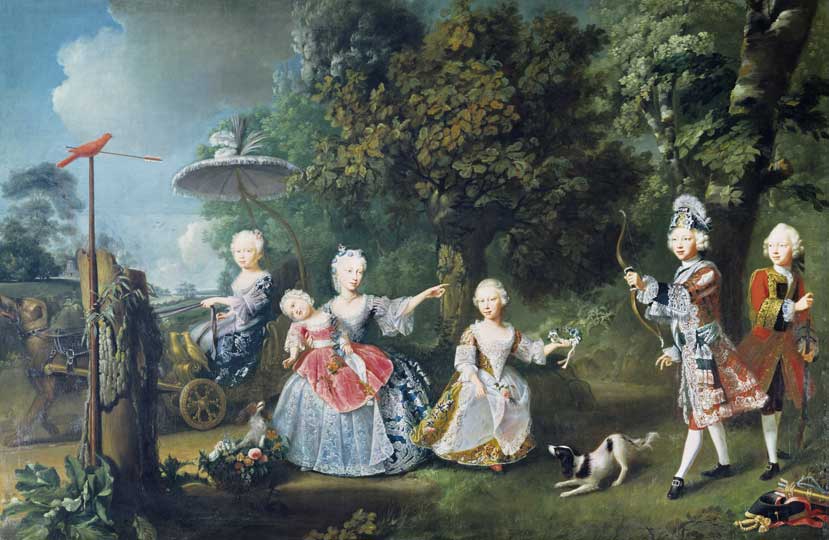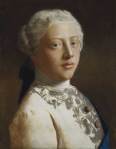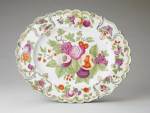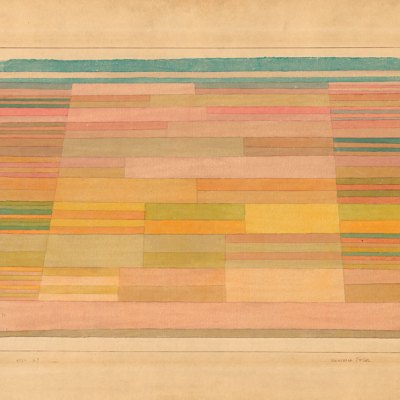As regular readers of this blog will know, this year’s tercentenary of the Hanoverian Succession presents an opportunity to celebrate the culture of the Georgian era. But the event we are actually commemorating, the accession of George I in 1714, has been somewhat overlooked in our indulgence of 18th-century taste and sophistication.
The Queen’s Gallery, Buckingham Palace, should therefore be applauded for bringing the circumstances of the Hanoverian Succession centre stage with an engaging and well-researched exhibition: ‘The First Georgians: Art and Monarchy 1714–1760’. The show shines a spotlight on the personalities and court culture of the first three members of the Hanoverian dynasty: George I, George II and Frederick, Prince of Wales (who would have been Frederick I, but for his premature death in 1751).
All three men were born and educated in Germany. They were a family of minor princes imported by Act of Parliament as a solution to a constitutional conundrum. A pragmatic act of procurement, of questionable legitimacy, the Hanoverian Succession set the tone for many of Britain’s cultural, mercantile and imperial ventures in the century that followed.
As constitutional monarchs, the early Hanoverians were always going to be subordinated to the interests of Parliament and the British state. Nowhere is this more apparent than in a letter from Frederick, Prince of Wales, to his eldest son, the future George III, which is on public display here for the first time. In the letter, written in 1749, Frederick advises the 11 year old George towards fiscal prudence rather than royal heroics, urging him as king ‘to reduce the national debt, ease the tax burden’ and ‘the sooner you have the opportunity to lower the interest, for God’s sake, do it’.
The first two Georges constructed a royal image within these financial and constitutional constraints. They did not seek to emulate their continental counterparts with expensive palace-building projects, but adapted what they had inherited, notably with new State Rooms at Kensington Palace, designed by William Kent.
The Cupola Room, Kensington Palace (c. 1817), R Cattermole. Royal Collection Trust © Her Majesty Queen Elizabeth II 2013

The exhibition expertly shows how the dynasty consolidated its position through a process of cultural assimilation with the British ruling elite, following rather than leading aristocratic taste. In addition to portraits, personal items and letters, the show features items collected or commissioned by the family, presented here as an archaeology of royal taste and patronage. It is a diverse range of material, including paintings, furniture, porcelain and jewellery, alongside more eclectic items, such as drawings of royal palaces, military maps and botanical illustrations.
As an exhibition strategy this works well, allowing the richness of the collection to speak for itself, and portraying the Hanoverian royals through the things they acquired, an approach that would not have been out of place in the 18th century. The exhibition is underpinned by the sort of object-focused, connoisseurial research that many public museums find hard to resource these days. An accompanying catalogue, edited by Surveyor of the Queen’s Pictures, Desmond Shawe-Taylor, details over 300 works from the collection.
At the centre of the exhibition is a room densely hung with Old Master paintings, many of which were acquired by Frederick, Prince of Wales. Shawe-Taylor describes this as ‘Houghton Re-visited, Re-visited’, a reference to the spectacular restaging of Robert Walpole’s of art collection at Houghton Hall last year (Apollo’s Exhibition of the Year). The comparison is a telling one, demonstrating the extent to which the king’s court was eclipsed by that of Walpole, who was Prime Minister from 1721 until 1742, and known as ‘The Great Man’.
The Thames from Somerset House Terrace towards Westminster (c. 1750), Giovanni Antonio Canal, called Canaletto Royal Collection Trust © Her Majesty Queen Elizabeth II 2013

As the influence of court began to diminish, London became the new focus of British cultural life. The metropolis of an ever-growing empire, it was where wealth was created, consumed and conspicuously displayed.
London emerges as a subject in the exhibition. We find it panoramically arrayed in Johannes Kip’s View and Perspective of London, taken from the vantage point of the roof of Buckingham House. The great sweep of the Thames is imbued with Venetian elegance in Canaletto’s pair of views from the terrace at Somerset House. And in St James’s Park and the Mall, Frederick, Prince of Wales rubs shoulders with the throng of cosmopolitan society, just one amongst the many immigrants who had made the city their home. Like the curators of this exhibition, the unknown artist of this painting has placed royalty at the centre of the assembly, but in doing so ironically shows how marginal the Hanoverian monarchy had in fact become within the great enterprise that was Georgian Britain.
‘The First Georgians: Art & Monarchy 1714–1760’ is at The Queen’s Gallery, Buckingham Palace until 12 October.
Related Articles
18th-century Envy (Katy Barrett)
Affected Taste: William Kent at the V&A (Matilda Bathurst)
First Look: ‘Georgians Revealed’ at the British Library
Caring for Kenwood (Martin Oldham)











